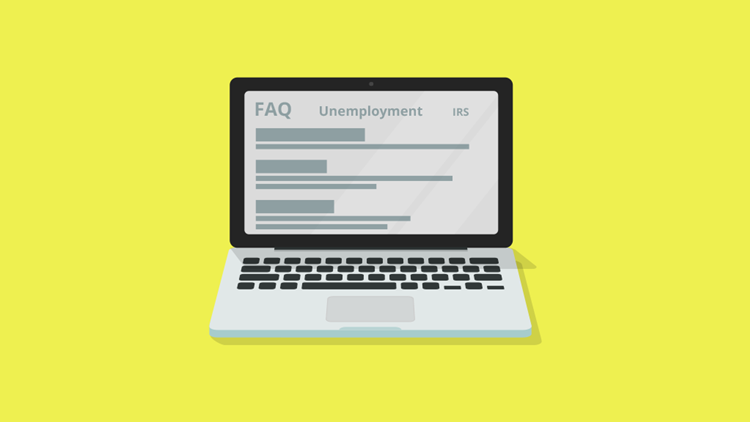by Ameritax | Apr 5, 2022 | Tax Tips and News
Those who own or control financial or bank accounts that are in a foreign country have some reporting to do, and soon. They have to file an annual Report of Foreign Bank and Financial Accounts—also known as the FBAR—on or before April 15.
Taxpayers who miss the April deadline will get an automatic extension, pushing their FBAR filing deadline back to October 15. Since it’s automatic, there’s no need for filers to request the extension.

Filing the FBAR
The Bank Secrecy Act says U.S. persons—including U.S. citizens, resident aliens and any domestic legal entities—must file an FBAR if they have:
- Financial interest in, signature authority or other authority over one or more accounts, such as a bank account, brokerage account, mutual fund or other financial account in a foreign country, and
- The aggregate value of all foreign financial accounts exceeds $10,000 at any time during the calendar year.
The Internal Revenue Service says this threshold means it’s a good idea for U.S. owners of any foreign accounts, even if those accounts are relatively small, to check and see if the filing requirement applies to them.
The IRS says “U.S. persons” covered by the filing requirements can be any citizen or resident of the United States, or a domestic legal entity such as a partnership, corporation, limited liability company, estate or trust.
There’s only one way to file an FBAR and only one place to get it. The FBAR form is only available through the BSA E-filing system and must be filed electronically with the Financial Crimes Enforcement Network (FinCEN).
If taxpayers are unable to e-file their FBAR for some reason, they’ll have to call FinCEN at 800-949-2732 (or 703-905-3975 if calling from outside the U.S.) or they can email FinCEN at [email protected].
There are indeed penalties for those taxpayers who are required to file an FBAR but do not. In civil and criminal penalties can include fines and even prison time. However, the IRS won’t penalize anyone who properly reported a foreign account on a late-filed FBAR if the agency decides there was reasonable cause for the late filing.
For more information about the FBAR and filing deadlines, see the Financial Crimes Enforcement Network’s (FinCEN) website. FinCEN also has additional information about the FBAR extension.
The IRS also has other resources that can be helpful:
Source: IRS reminds holders of foreign bank and financial accounts of April FBAR deadline
– Story provided by TaxingSubjects.com
by Ameritax | Apr 2, 2022 | Tax Tips and News
The Internal Revenue Service is going the extra mile to ensure taxpayers have the newest information on the third-round Economic Impact Payment.
The agency’s frequently asked questions on the third-round payment have been updated with new dates and other information so taxpayers can make better decisions. The new FAQs are published in the IRS Fact Sheet 2022-22.
The third-round Economic Impact Payment was authorized by the American Rescue Act of 2021. It was structured as an advance payment of the 2021 Recovery Rebate Credit.

Filing a 2021 income tax return is vital for those taxpayers who either did not receive the third-round Economic Impact Payment (EIP), or those who didn’t get the full amount. These taxpayers have to file a return claiming the Recovery Rebate Credit which, in effect, may give them another chance at the EIP.
The Recovery Rebate Credit can reduce any tax the taxpayer owes or can be included in their refund.
There is a wide range of updates
The IRS has updated frequently asked questions and their answers in nine different topic areas, with several updates in each topic. The updated topics include: General Information; Eligibility and Calculation of the Third Payment; Plus-Up Payments; EIP Cards; Requesting My Payment; Social Security, Railroad Retirement and Department of Veterans Affairs benefit recipients; Receiving My Payment; Reconciling on Your 2021 Return; and Payment Issued But Lost, Stolen, Destroyed or Not Received.
The IRS says it has issued all the third-round EIPs that were outstanding and due taxpayers. This includes the “Plus-Up” payments, leaving a 2021 tax return as the only way to now apply for the third-round payment.
Families and individuals in the following circumstances, among others, may not have received the full amount of their third-round Economic Impact Payment because their circumstances in 2021 were different than they were in 2020.
These families and individuals may be eligible to receive more money by claiming the 2021 Recovery Rebate Credit on their 2021 income tax return:
- Parents of a child born in 2021 who claim the child as a dependent on their 2021 income tax return may be eligible to receive a 2021 Recovery Rebate Credit of up to $1,400 for this child.
- All eligible parents of qualifying children born or welcomed through adoption or foster care in 2021 are also encouraged to claim the child tax credit—worth up to $3,600 per child born in 2021—on their 2021 income tax return.
- Families who added a dependent—such as a parent, a nephew or niece, or a grandchild—on their 2021 income tax return who was not listed as a dependent on their 2020 income tax return may be eligible to receive a 2021 Recovery Rebate Credit of up to $1,400 for this dependent.
- Single filers who had incomes above $80,000 in 2020 but less than this amount in 2021; married couples who filed a joint return and had incomes above $160,000 in 2020 but less than this amount in 2021; and head of household filers who had incomes above $120,000 in 2020 but less than this amount in 2021 may be eligible for a 2021 Recovery Rebate Credit of up to $1,400 per person.
- Single filers who had incomes between $75,000 and $80,000 in 2020 but had lower incomes in 2021; married couples who filed a joint return and had incomes between $150,000 and $160,000 in 2020 but had lower incomes in 2021; and head of household filers who had incomes between $112,500 and $120,000 in 2020 but had lower incomes in 2021 may be eligible for a 2021 Recovery Rebate Credit.
As we mentioned, the only way to get the Rebate Recovery Credit is to file a 2021 tax return; the credit will not be calculated automatically by the IRS.
Didn’t get a third-round EIP?
Those people who believe they missed out on the third-round stimulus payment can visit the Recovery Rebate Credit web page on the IRS website to figure whether they are eligible for the Recovery Rebate Credit.
Taxpayers can also go online to their IRS online account, and click on “Tax Records” to see what the IRS sent them for a third-round EIP.
The Internal Revenue Service has also sent out Letter 6475 to taxpayers, using the addresses they have on file. These letters seek to confirm the amount of the taxpayer’s third Economic Impact Payment, along with any plus-up payment they received for tax year 2021.
For more information, visit the Recovery Rebate Credit page on IRS.gov.
Information is also available about taxpayer reliance on IRS FAQs.
Sources: IRS provides revised frequently asked questions on Third-round Economic Impact Payment; Fact Sheet 2022-22
– Story provided by TaxingSubjects.com
by Ameritax | Apr 2, 2022 | Tax Tips and News
Now that the Internal Revenue Service has mailed Letters 6475 to all the taxpayers who got third-round Economic Impact Payments (EIPs), there’s only one door left open to those who didn’t get the full benefit of the stimulus payments.
People have to claim any remaining third-round EIP amounts on their 2021 income tax return using the Recovery Rebate Credit.
More than 175 million third-round payments totaling over $400 billion were issued by the IRS as of Dec. 31, 2021. Since EIPs are no longer being issued, filing a 2021 income tax return claiming the Recovery Rebate Credit is the only remaining option for taxpayers.

The three EIPs were advance payments of the Recovery Rebate Credit. Most taxpayers got the full amount of the credit through the EIPs and don’t need include any information about the payments in their 2021 return.
The same goes for those taxpayers who received what’s called “plus-up” payments. These were additional payments from the IRS to those who initially got a third-round EIP based on information from their 2019 tax return, but were eligible later for a larger amount, based on their 2020 return.
How do taxpayers know the EIP amount they received?
The best way to know what Economic Impact Payments a taxpayer has gotten is to access their IRS Online Account, where the amounts were posted in the Tax Records page. In the case of married spouses filing jointly, each spouse will have to log into their own Online Account to see their part of the total payment—or check out their personal Letter 6475.
More information can be found in the Frequently Asked Questions for Topic G: Finding the Third Economic Impact Payment Amount to Calculate the 2021 Recovery Rebate Credit.
Taxpayers should check their records first
The most efficient way to check up on possible Economic Impact Payments is to simply check bank account records—especially those from early spring and summer of 2021—to see if the payment was actually received and deposited.
If a taxpayer’s IRS Online Account shows an EIP was issued (any payment greater than $0 qualifies). or if the taxpayer has a Notice 1444-C or Letter 6475 saying a payment was issued to them, but the payment was never received, they should contact the IRS as soon as possible to see if a payment trace is needed.
Note that if a payment was issued by the IRS but returned, the amount shown in the Online Account may be less that the amount in their Letter 6475. A payment trace should not be requested to find if a taxpayer was eligible for a payment, or to confirm the amount of payment they should have gotten.
If a trace is requested, there’s no need to wait until it’s complete to file a 2021 tax return. Whether completing the Recovery Rebate Credit Worksheet in the printed forms or answering EIP questions in tax software, taxpayers have two options to move forward.
They can opt to use the amount printed in their Letter 6475 or the EIP amount found in their Online Account to figure their Recovery Rebate Credit on line 30; or, the taxpayer can merely use the amount of EIP they believe they got to calculate the line 30 amount.
Either way, if the trace reveals the taxpayer in fact did not receive the Economic Impact Payment, the IRS will then automatically adjust the amount of Recovery Rebate Credit on the tax return and issue a refund as needed.
Mistake? No amended return necessary
There’s good news for taxpayers who make a mistake in figuring their 2021 Recovery Rebate Credit on line 30: the IRS says they don’t have to file an amended return to fix the error. Instead, the IRS will correct the amount and send a notice letting the taxpayer know what’s been done.
However, for those who did not claim the Recovery Rebate Credit on their 2021 returns, if the IRS shows they weren’t issued an Economic Impact Payment, they’ll have to file a Form 1040-X, Amended U.S. Individual Income Tax Return, to make their claim for the stimulus payment.
Those on the fence on whether they need to file an amended return or not can use the Interactive Tax Assistant, Should I File an Amended Return? to determine the best way forward.
Taxpayers who filed their 2021 return electronically may be able to file their amended return electronically as well. Otherwise, if they filed a paper return, they’ll have to complete the paper Form 1040-X and follow the instructions for preparation and mailing.
For more information, see the Recovery Rebate Credit page and the 2021 Recovery Rebate Credit Frequently Asked Questions on the IRS website.
Source: Letters about third-round of Economic Impact Payments issued; important steps to take for missing payments and corrections
– Story provided by TaxingSubjects.com
by Ameritax | Mar 26, 2022 | Tax Tips and News
The Internal Revenue Service has issued a new set of frequently asked questions (FAQs) covering the unemployment compensation exclusion for the 2020 tax year.
One question/answer is brand new brand new and another nine answers have been newly updated, reflecting new dates or new information available.

The updates are laid out in Fact Sheet FS-2022-21, which is available on the IRS website.
New information on delayed compensation
The new information revolves around delayed payments of unemployment compensation. For example, if a taxpayer was unemployed in 2020, but payments were delayed until 2021, would the taxpayer still qualify for the exclusion?
The Fact Sheet makes it clear that the answer here would be no. Unemployment compensation relief is made possible through the American Rescue Plan, which limits this relief to unemployment payments actually received in 2020. Unemployment compensation payments received in any other year just aren’t covered.
Some of the other topics now carry updated answers reflecting revised or updated information. One such update concerns taxpayers who have already filed their 2020 income tax returns, but want to report the unemployment compensation exclusion.
One of the updated sections poses the question if the unemployment compensation exclusion means taxpayers can get the exclusion’s full $10,200 as a cash refund. The Fact Sheet is clear that because the exclusion is not refundable, there won’t be a direct payout, although it will likely lessen a taxpayer’s tax liability. This could lead to a refund due to overpayment of tax.
The Fact Sheet also says taxpayers generally don’t need to file an amended tax return in order to claim the unemployment compensation exclusion, unless they’re entitled to a credit or deduction they didn’t claim on their 2020 return.
The IRS says it started reviewing 2020 returns in May 2021 and the process is continuing. The Fact Sheet says taxpayers have no worries about missing the exclusion if they’ve already filed for 2020.
“If you already filed your 2020 tax return, we’ll determine the correct taxable amount of unemployment compensation and tax. We’ll also adjust any non-refundable or refundable credits you reported on your return that are impacted by the exclusion and issue any refund due,” the Fact Sheet states.
“In addition, if you did not claim the Recovery Rebate Credit or the Earned Income Tax Credit with no qualifying children on your tax return, but you are now eligible when the special unemployment exclusion is applied for tax year 2020, you do not need to file an amended 2020 tax return. If you are now eligible, the IRS will calculate these credits for you and include them in any overpayment and any refund due.”
Some of the topics covered by the new and updated information include amended returns (Form 1040-X); Impact to Income, Credits and Deductions; Receiving a Refund, Letter or Notice; and Economic Impact Payments.
The IRS says these FAQs are updated so that general information can be relayed to taxpayers and tax pros in the quickest manner possible. But the agency cautions that FAQs should not be used as reliable source of tax law, or used as a basis for legal positions before legal bodies such as the Tax Court. The IRS has more information about relying on FAQs.
Sources: IRS revises frequently asked questions on 2020 unemployment compensation exclusion; Fact Sheet FS-2022-21
– Story provided by TaxingSubjects.com
by Ameritax | Mar 24, 2022 | Tax Tips and News
The Internal Revenue Service is cautioning taxpayers with virtual currency not to skip over a small, but vitally important, part of their Form 1040 this year.
As the saying goes, the devil’s in the details.
The pitfall comes in the form of a simple check box at the top of each Form 1040, Form 1040-SR, or Form 1040-NR. It asks, “At any time during 2021, did you receive, sell, exchange, or otherwise dispose of any financial interest in any virtual currency?”

Sounds simple enough. Taxpayers have to check either “Yes,” or “No” to the crypto question, and every taxpayer—whether or not they have virtual currency or have ever had virtual currency—has to answer that simple question on the IRS flagship form.
When the Answer is “No”
Those taxpayers who owned virtual currency but didn’t have any transactions involving virtual currency during the 2021 tax year can answer “No” to the question and go on with the rest of the form. But their activities must have been to be limited to:
- Holding virtual currency in their own wallet or account.
- Transferring virtual currency between their own wallets or accounts.
- Purchasing virtual currency using real currency, including purchases using real currency electronic platforms such as PayPal and Venmo.
- Engaging in a combination of holding, transferring, or purchasing virtual currency as described above.
When the Answer is “Yes”
The IRS says these are the most common transactions in virtual currency that require a “Yes” answer on any of the Forms 1040:
- The receipt of virtual currency as payment for goods or services provided;
- The receipt or transfer of virtual currency for free (without providing any consideration) that doesn’t qualify as a bona fide gift;
- The receipt of new virtual currency as a result of mining and staking activities;
- The receipt of virtual currency as a result of a hard fork;
- An exchange of virtual currency for property, goods, or services;
- An exchange/trade of virtual currency for another virtual currency;
- A sale of virtual currency; and
- Any other disposition of a financial interest in virtual currency.
If a taxpayer used a sale, exchange or transfer to dispose of virtual currency held as a capital asset, they too would answer “Yes” to the question at the top of the Form 1040.
These taxpayers would use Form 8949 to determine any capital gain or loss and then report it using Schedule D of Form 1040.
The IRS also has a further reminder for taxpayers who were paid for their services in virtual currency and those who sold or disposed of virtual currency that was held for sale as part of a trade or business.
These taxpayers are reminded their virtual income must be reported just as other income of the same type. This means virtual W-2 wages should be reported on Form 1040, 1040-SR, or 1040-NR, line 1; virtual inventory or services from Schedule C reported on Schedule 1.
Page 17 of the 2021 Form 1040 Instructions has more information. For more general information on virtual currency and other related sources, visit the Virtual Currencies webpage on the IRS website.
Source: IR-2022-61
– Story provided by TaxingSubjects.com











 Ameritax
Ameritax